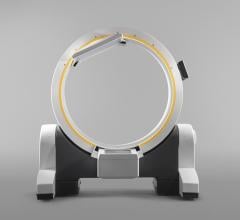July 6, 2017 — The U.S. Food and Drug Administration (FDA) recently issued a safety communication alerting healthcare providers about recent reports of navigational accuracy errors during surgical procedures when using frameless stereotaxic navigation systems. The administration said some of these errors have led to patient deaths, serious or life-threatening injuries, and inaccurate, aborted or prolonged medical procedures.
Based on their analysis, the FDA believes that there are many factors that contribute to these errors, and no particular system carries greater risk than others. The administration is working with device manufacturers to ensure accurate labeling that includes clear user instructions on how to minimize the occurrence of these issues.
Stereotaxic navigation systems include a computer system that utilizes patient imaging (e.g., computed tomography, magnetic resonance imaging) to guide surgeons with the placement of specialized surgical instruments and implants before and during the procedure. Stereotaxic systems are generally considered framed or frameless.
While this communication is focused on frameless stereotaxic navigation systems since these systems are more commonly used, many of the recommendations provided are applicable to framed and frameless stereotaxic navigation systems.
The FDA recommends that healthcare providers consider the following information and actions to reduce the potential of serious adverse events:
- Be aware that based on current information, the FDA believes the overall benefits of these devices continue to outweigh the risks in appropriately selected patients when used by properly trained surgeons, and they have not determined that any particular system carries greater risk than others;
- Assess navigational accuracy repeatedly throughout a procedure when using a surgical navigation system.
- Reconfirm accuracy by positioning the navigated instrument tip on an identifiable anatomical landmark and comparing the actual tip location to that displayed by the system; and
- If the stereotaxic navigation system does not appear to be accurate despite troubleshooting (e.g., resetting the system), do not rely on the navigation system.
Healthcare professionals and patients are encouraged to report adverse events or side effects related to the use of these products to the FDA's MedWatch Safety Information and Adverse Event Reporting Program
For more information: www.fda.gov/medwatch/report


 January 18, 2022
January 18, 2022 









